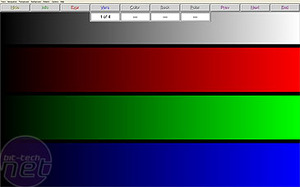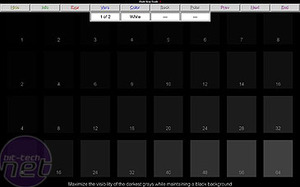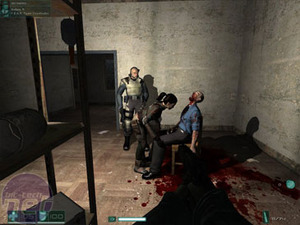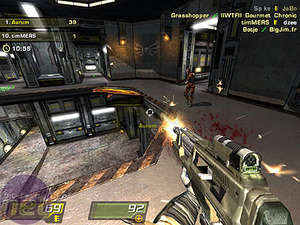
Testing:
We ran the monitor through a series of real-world and synthetic tests to see whether or not the SyncMaster 215TW can stand up to hardcore geek use.DisplayMate: DisplayMate is the only synthetic test we use because it can reveal some things that other tests don't show up quite so well. I am pleased to report that the SyncMaster 215TW delivered a strong showing in DisplayMate. The 256 intensity level colour ramp test was an area of weakness on the Dell 2407WFP, resulting in some banding issues. However, there were no apparent banding issues with the 215TW - the colour gradients were smooth and vibrant with no compression at either end of the scale.
There was a very slight green tinge in the 64-step 4 symmetric grey-scale test, and also in the 64-step grey-scale tunnel test, too. These weren't all that apparent, and you'd only notice it if you were looking for it - it's certainly nothing to detract from an otherwise strong DisplayMate showing.
High-Resolution Photos: We looked at a number of high-resolution photographs on the screen to see whether there was any apparent colour compression going on. The colour reproduction was up there with the best of monitors we've seen - colours were vibrant and full, without being over-saturated. The blacks were very dark, while still maintaining good levels of detail and no apparent compression showing up. Shadows were pretty much the same, too - the details in shadows were as sharp as the details in lighter areas.


The second scene we looked at was still a fast paced scene, but with a completely different backdrop. Chapter 7 is a particularly fast-moving fight scene in an urban area at night. The tiles on the roofs and bricks on buildings were sharp and detailed, while the shadows were dark and crisp, too.
Gaming: I've sat down and played numerous games on this display over the last few days and everything looked great. The quoted 8ms response time didn't show any signs of ghosting in fast paced games like NFS: Most Wanted. Although, we had to use a widescreen hack to get NFS: Most Wanted to work at the 215TW's native resolution. That's nothing against this particular monitor, it's just an obsticle that all widescreen users have to put up with until developers widely adopt support for 16:10 resolutions.
The display coped incredibly well with the blacks in F.E.A.R. and Quake 4, while the contrast between bright HDR lighting and dark shadows in Half-Life 2: Episode One looked as good as we've seen on any other widescreen LCD monitor. We also fired up The Elder Scrolls IV: Oblivion on the display. The landscapes looked simply fantastic and we were drawn right into the game with the combination of vibrant colour reproduction and the display's ability to cope incredibly well with Oblivion's FP16 HDR lighting techniques.



MSI MPG Velox 100R Chassis Review
October 14 2021 | 15:04








Want to comment? Please log in.